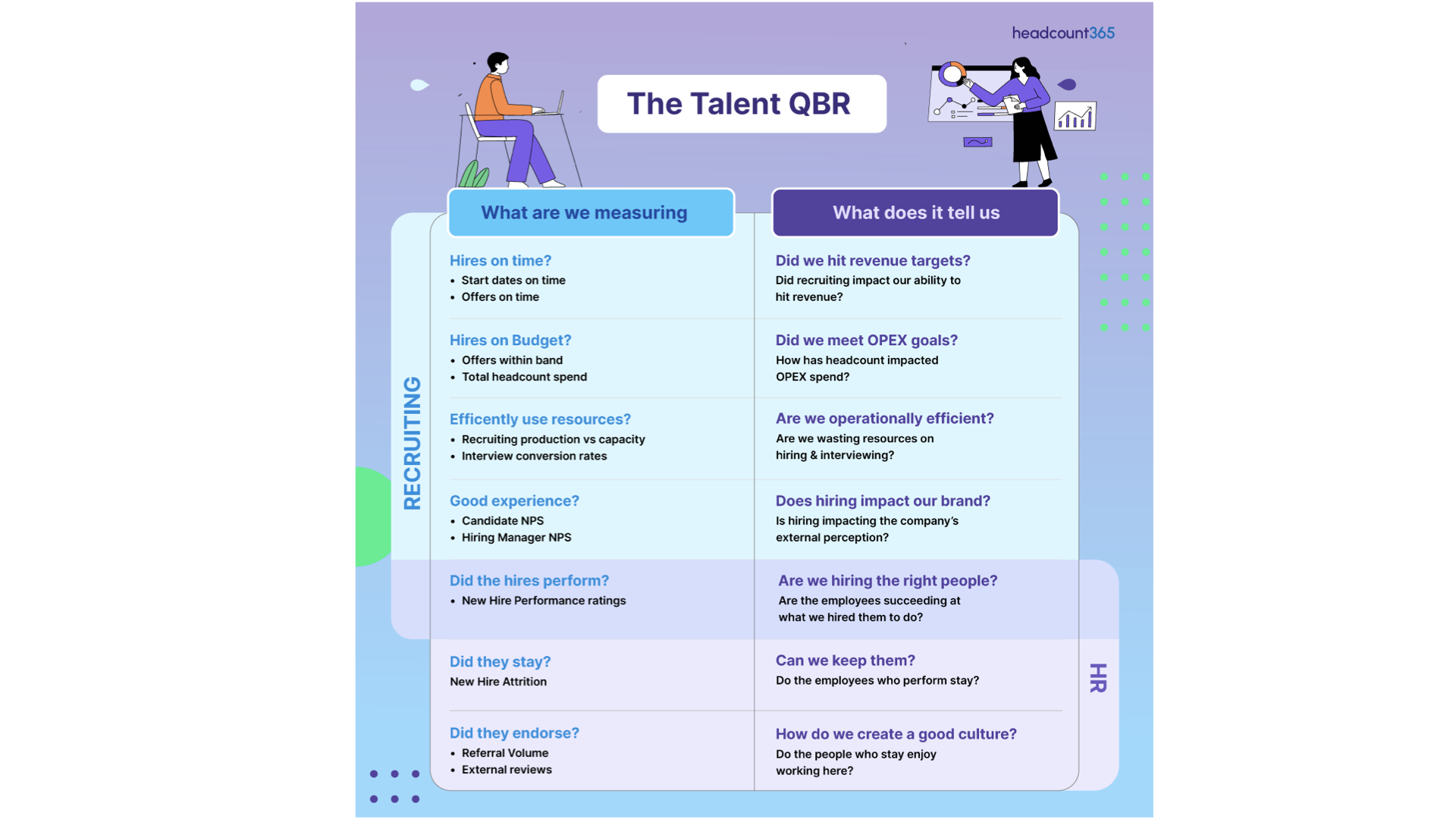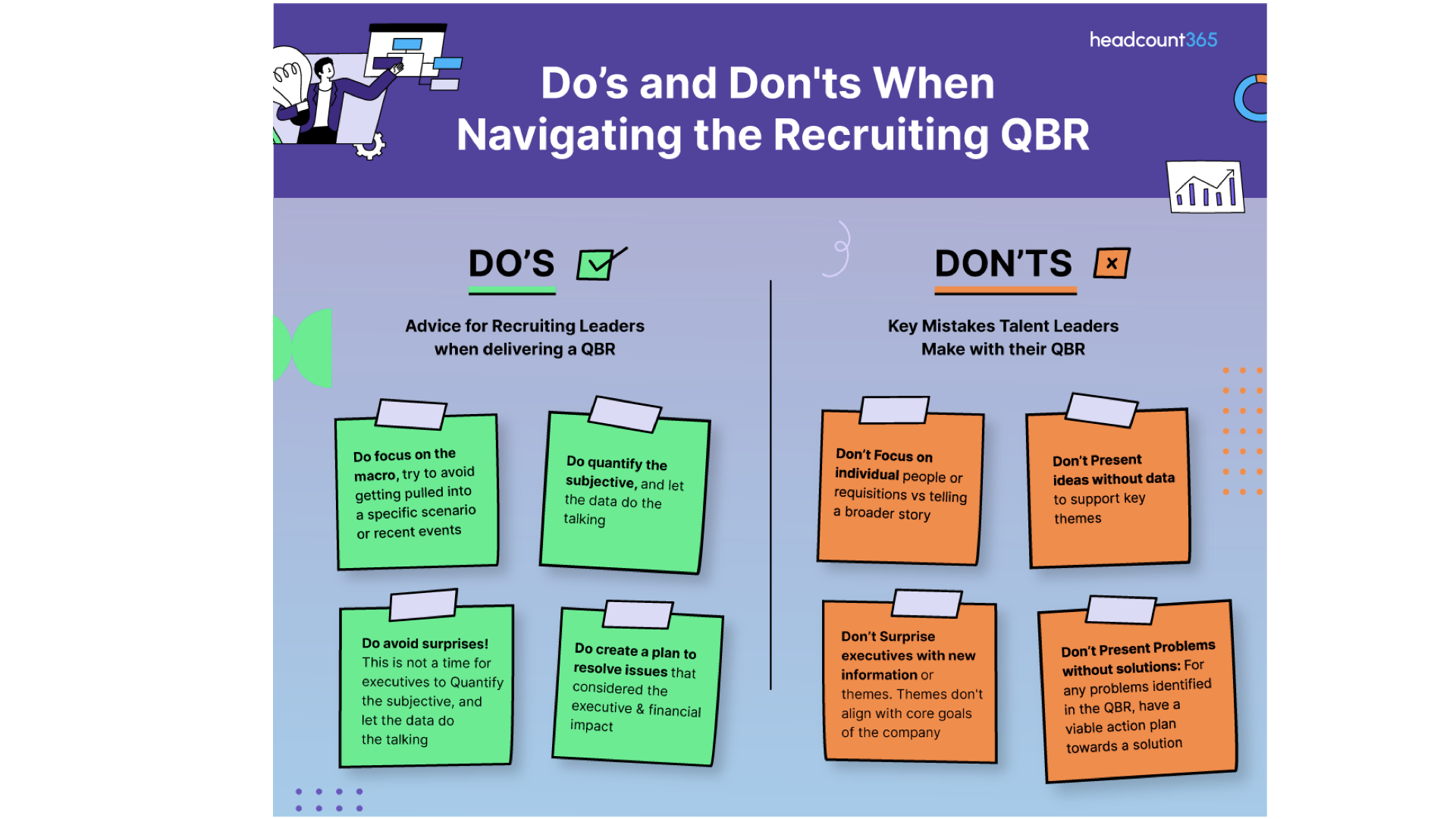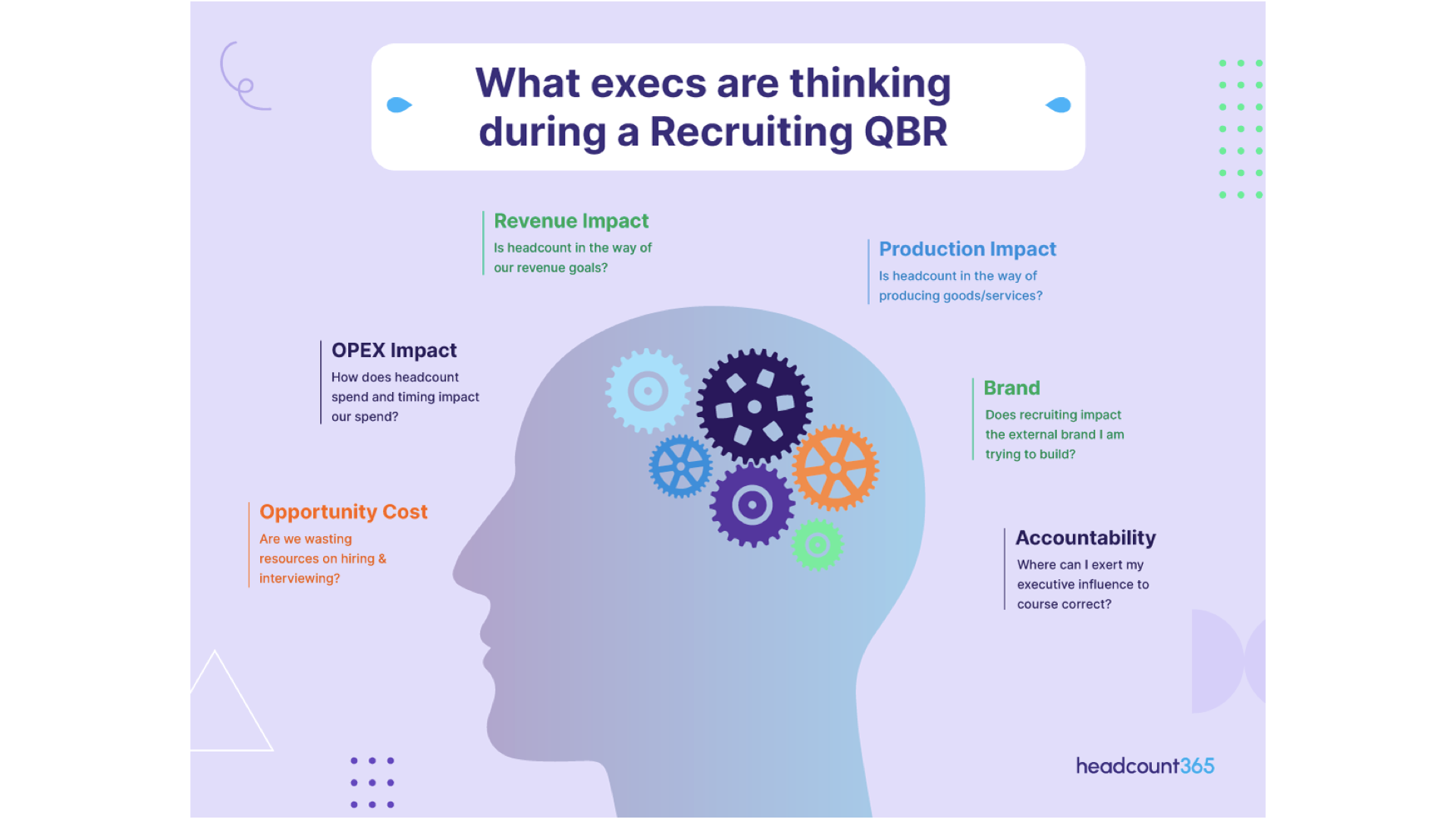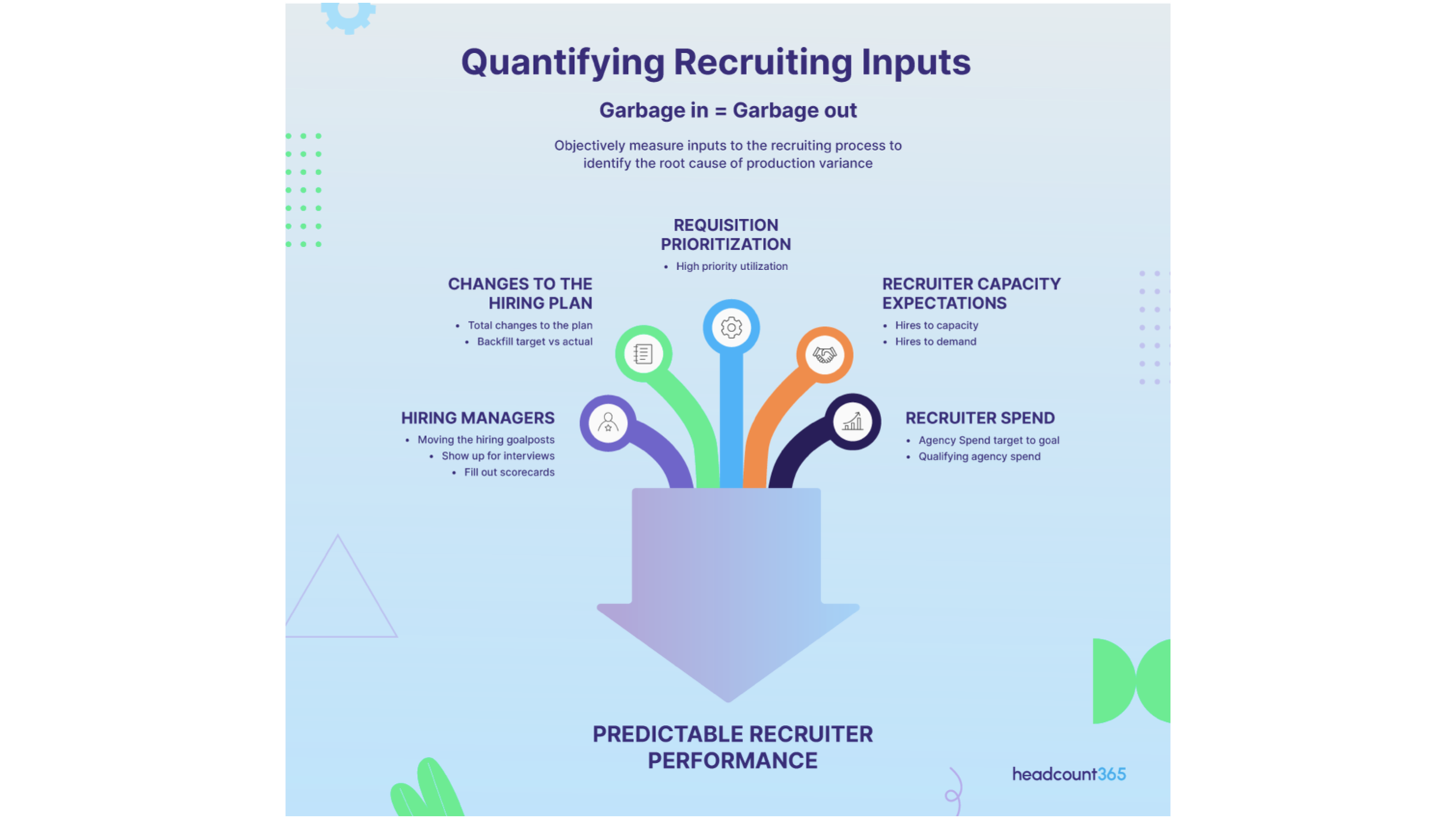A Recruiting Leader’s Guide to the QBR (Quarterly Business Review)
QBRs are one of the most important tools in a recruiting leaders toolbox. Recruiting leaders get the opportunity to get out of the day to day of recruiting, and talk about the macro impact of the work. Rather than debate the outcome of an individual role, candidate, or process, you get the opportunity to talk about the entire recruiting service, unifying teams behind it’s importance. In doing so, you drive increased accountability for the inputs of each stakeholder, build trust with your recruiters as a leader, and drive towards a more predictable recruiting outcome for the future.
QBRs are typically 15-20 minutes during an executive meeting, where the recruiting leader has the space and attention to discuss the service of recruiting. It is also often the most misused time of any recruiting leader meeting, as there is a temptation to use it as a singular meeting, when in actuality, QBRs are data points on a much larger story line. Not only should you be articulating your performance this quarter, but you should reference previous QBR data and set expectations for future performance. Think of these as your pseudo-performance review.
In many cases, Recruiting and HR share the stage to present the total lifecycle of hiring & it’s impact on the business. While each company has a unique overlap of these services, executives often treat them as one, so it’s important that you organize your information into a singular story. This singular Recruiting and HR story can be thought of as a “Talent QBR” vs just a “Recruiting QBR”.
The People and Recruiting teams seldomly get the attention and focus of the entire Executive team, so it’s important that we use this time wisely. It’s easy to get pulled into a conversation about something that’s right now, but leveraging this time as an executive advisor builds credibility not only as a Subject Matter Expert (SME), but as a leader who can navigate the executive environment. Below are a few do’s and don’ts when heading into a Talent QBR.
Now that you have the executive’s attention, it’s important you communicate in a way that get’s the desired outcome. As recruiters and recruiting leaders we do this with interviewing all the time. When we ask a candidate their biggest failure, we don’t want to know about the failure, we want to know about how they learned from it, and used it to prevent future mistakes. The QBR is a very similar situation. If hiring managers are impacting the funnel, executives want to know the impact to the business and how they can help, so you must translate that message for them so they can help you.
The outputs you decide to include in your quarterly business review all have one thing in common. There are inputs from the business that will impact these outputs. As a leader these inputs help you determine where to drive accountability, both positive reinforcement and corrective action, for other executives. Objective measurement of these items (all automated in headcount365) is crucial to how executives receive this information, especially when asking for corrective action. The data must be irrefutable, so you can focus on how a change would impact the outcome. Below are a few of the key inputs you can measure during your QBR.
The next critical action during a QBR is measuring the variance from the targets set at the beginning of the quarter, or in some cases, the fiscal year. Variance is the main concern of every executive, especially as their results might be contingent on the recruiting service. The best recruiting leaders, with the most successful QBRs can easily identify if the hiring variance was a product of the hiring funnel, recruiter performance, business changes, or hiring manager inputs. Not only does build trust for the executive accountability you are championing, it is the foundation for an action plan to correct action.
Take a look at the 5 key variances I covered in my QBR, all of which can be produced instantly, in real-time by headcount365.
After you’ve explained what’s happened and why, it’s now time for the most critical part. What are you going to do about it? Better yet, What are WE going to do about it as a business? Creating an action plan is arguably the whole reason the executive team gave you the time in the first place. While they certainly want to be successful, they are simultaneously thinking, “What does this mean for me?”
So let’s talk action plans. Remember those 4 key sources of variance I covered above? It’s now time to explain what you’re doing about them. Every action plan should have inputs from stakeholders, with a focus of corrective action, and a forecast of the output. Easier said, what are we doing, who’s doing it, why are they doing it, and what happens when its done? Below is an overview of the common problem/solutions that often arise in the Talent QBR.
So why is the CEO of headcount365 writing about Talent/Recruiting QBRs? It’s because I lived the pain of doing them, and had to create a solution to revolutionize this process.
I was done with putting all of this information with spreadsheets, overusing Recruiting Operations , FP&A, and HRBP hours just to produce mediocre data. I’ve dealt with the “he said/she said” arguments about the things that are easily measurable. I’ve left the QBR defeated, or undervalued and I knew if I unlocked the data from the headcount plan I could change all of it.
If you enjoyed this article, and want to see what we’re building to completely transform and automate this process, please reach out!








